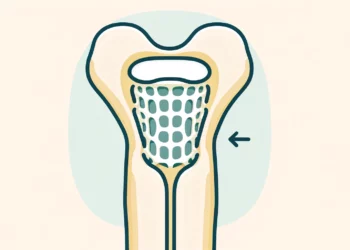An international team of researchers has unearthed a beautifully preserved bone carving depicting a small bird at the Paleolithic site of Lingjing, in Henan, China. The ancient artwork, dated to between 13,800 and 13,000 years old, is the earliest 3D piece of art found in East Asia, pointing to a longstanding artistic tradition specific to the region.

Most ancient three-dimensional artworks have been discovered in Europe. In 2007, a team led by Nicholas Conard from the University of Tübingen in Germany excavated a tiny figurine of a woolly mammoth, measuring only 3.7 cm in length and weighing a mere 7.5 grams, from a site 1 km northwest of Stetten-ob-Lontal, Baden-Württemberg, Germany. Dated to 33,000 BCE, the mammoth figurine was skillfully carved, showing fine attention to detail.
Conard also discovered the oldest figurine depicting a human, a 35,000-year-old sculpture of a tiny figure, with short arms ending in five fingers. The Venus-like figurine was found three meters underground, within the Hohle Fels Cave in southern Germany.
Although the oldest known cave art — the 44,000 years old cave art of South Sulawesi, Indonesia — is located in East Asia, before the Lingjing discovery, the earliest three-dimensional animal sculpture from the continent was only 4,500 years old.
This has led some scholars to believe that there was quite an important lag between European and Asian hunter-gatherer cultures in 3-D artwork creation. Now, in a new study led by Zhanyang Li from Shandong University, China, archaeologists have cast new light on humanity’s earliest 3-D art.
Excavations at the Lingjing site first began in 2005, exposing 11 distinct stratified layers ranging in age from 120,000 years to the Bronze Age. However, the researchers realized they were in trouble. The fifth layer had been removed by a well-digging operation in 1958 — but not entirely.
A refuse heap from the time the well was built was still intact. Inside it, Li and colleagues found several artifacts, including shards of pottery, burned animal remains, as well as the bird figurine carved out of bone.
“The first time we looked at the figurine under the microscope we could not believe our eyes. Not only the traces of manufacture were well preserved. They clearly indicated that the artist was extremely skillful and able to adapt different techniques to carve each part of this tiny sculpture,” Francesco D’Errico of the Université de Bordeaux and corresponding author of the new study, told ZME Science.

Radiocarbon dating on the burned animal remains suggests that the bird figurine and associated bone material are about 13,000 years old. This predates previously known instances from this region by 8,500 years. The only other example of a bird figurine is a jade songbird sculpture dated to approximately 5,000 years ago.
“The oldest known statuettes, carved from mammoth ivory and depicting animals and humans, date to the Aurignacian period (40,000 years ago) and come from archaeological sites located in the Swabian Jura, Germany. For large areas of the world, however, it remains unclear when the production of three-dimensional representations became an integral part of the cultural repertoire of human societies, and whether this innovation was achieved independently or by diffusion from a center of origin. The discovery of this statuette, now the oldest work of Chinese art, sets back the origin of sculpture in East Asia by more than 8,500 years. Its stylistic and technological peculiarities – it is the only known Paleolithic sculpture of an animal standing on a pedestal – identify an original artistic tradition, unknown until now,” D’Errico said.
The findings appeared in the journal PLOS ONE.






